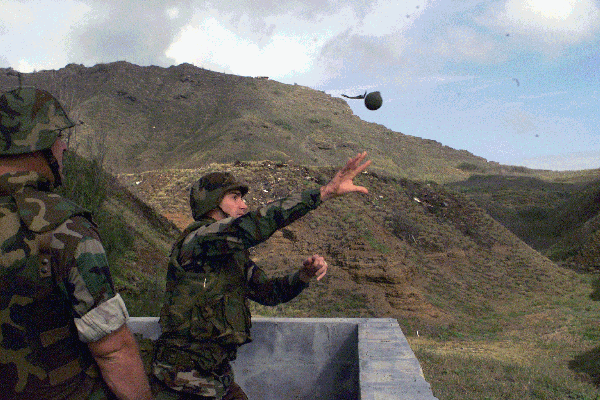 Infantrymen use large numbers of hand grenades in
close fighting, especially in cities. They weigh about one pound and can
be thrown 40 meters. However, their explosive power is small and rarely kills
anyone. In urban operations, they are tossed
in a room so the explosion can injure and stun the enemy before infantrymen
charge
Infantrymen use large numbers of hand grenades in
close fighting, especially in cities. They weigh about one pound and can
be thrown 40 meters. However, their explosive power is small and rarely kills
anyone. In urban operations, they are tossed
in a room so the explosion can injure and stun the enemy before infantrymen
charge inside. While hand grenades are useful, infantrymen need something with
much more power; like a five pound grenade shaped like the famous Maglite
flashlight (right), which I call a "magbomb."
inside. While hand grenades are useful, infantrymen need something with
much more power; like a five pound grenade shaped like the famous Maglite
flashlight (right), which I call a "magbomb."
This would be easy to carry and the long shape allows the magbomb to be flung over 20 meters, similar to the German "potato smasher" grenades of World War II. A magbomb can blow open doors, kill everyone in a room, and destroy unarmored vehicles. Whenever infantrymen are tasked with clearing a city or assaulting fortifications, crates of magbombs would be requested so infantrymen can blast their way forward. In defensive positions, infantrymen would feel safer with several magbombs nearby ready to kill anyone who gets too close. Ideally, magbombs have a simple electronic detonator to set a delay from five seconds to five hours. This allows commandos or infiltrators to plant dozens of magbombs and safely escape. Recon teams in trouble can drop these (with a two minute delay or so) as they flee to discourage pursuers.
The need for magbombs has been known for decades. Infantrymen still make their own by packing explosives in a case to make a "satchel charge." This works but produces no fragments, is difficult to throw, and igniting the charge is awkward. Amazingly, infantrymen are still taught to improvise "satchel charges" but no one has thought to mass produce a superior magbomb. Close combat is terrifying and infantrymen would feel more confident with magbombs to toss at whatever they encounter.
©2015 www.G2mil.com